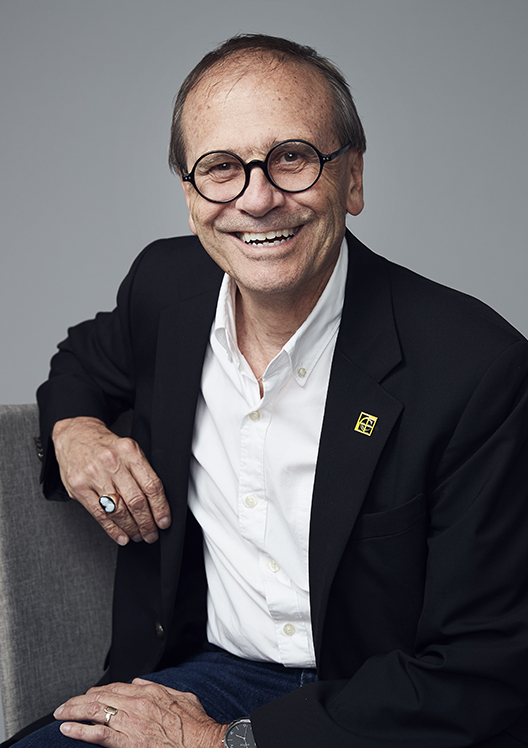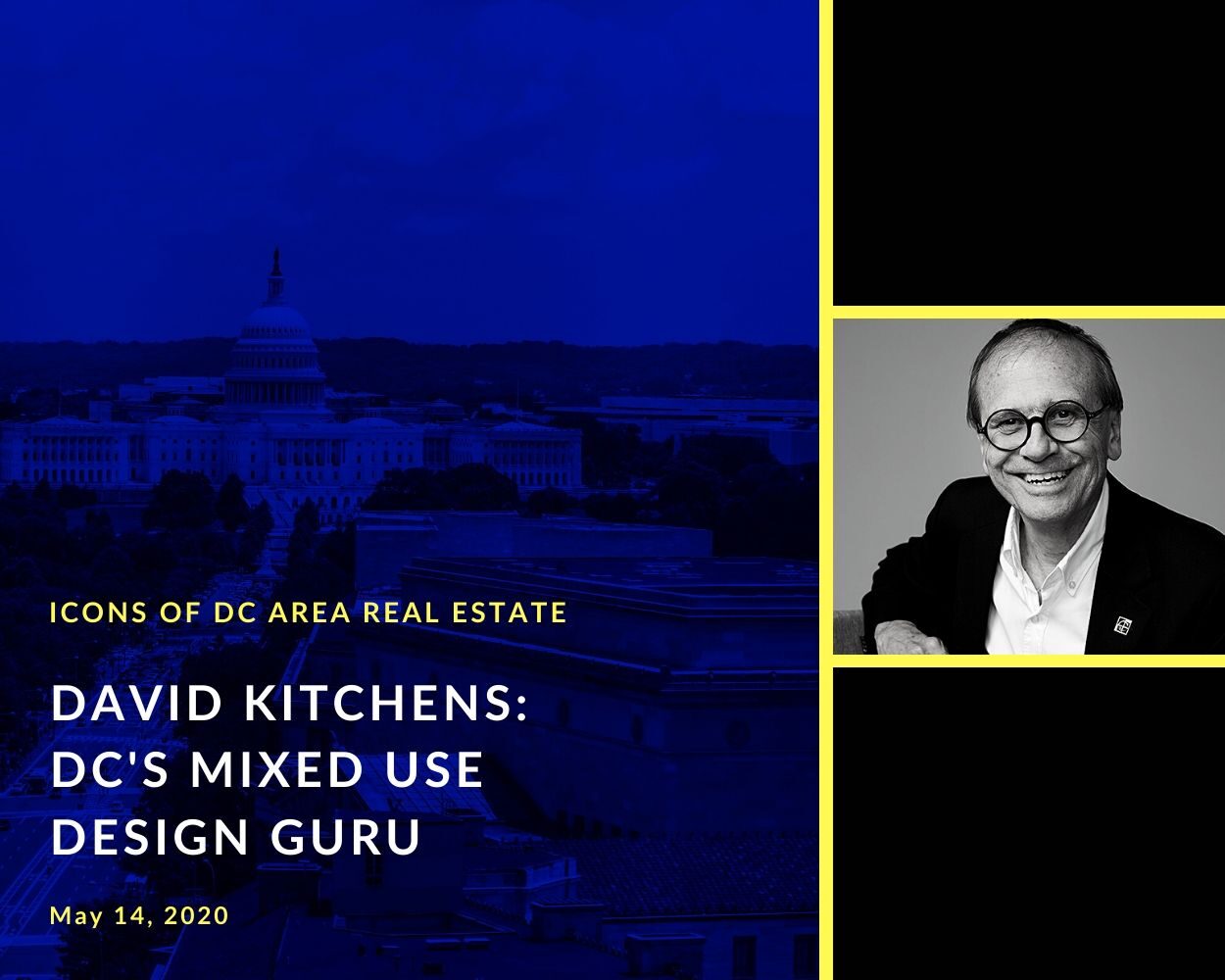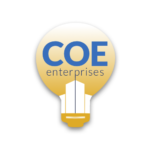

Bio
David Kitchens joined Cooper Carry in 1984, and was named Principal in the Mixed-Use Studio in 1998. He now leads the Cooper Carry Washington DC office. David is a member of several organizations including the American Institute of Architects (AIA), the Urban Land Institute (ULI), and the National Council of Architectural Registration Board (NCARB). He earned both his Bachelor and Master of Architecture from the Georgia Institute of Technology. David is registered to practice in 21 states as well as the District of Columbia.
Show Notes
Current Role
- Old School Guy- Cooper Carry almost entire career (since 1984) (3:30)
- Opened DC office in 1987 living here (4:40)
- Hiring my “kids”- all the young people his kids age…sees himself as a coach (5:30)
- Transitioning leadership to younger people (Acting as a Senior Advisor) (5:45)
Origins and Education
- Atlanta native (6:10)
- Grandfather a dairy farmer (7:00)
- Connection in seeing a city grow in Atlanta (8:00)
- Grew up near East Lake Golf Club (8:25)
- Playing the drums and swimming (9:45)
- Traveling band as a child as a percussionist (10:05)
- Architecture is about rhythm and a vibe (11:00)
- Dad was in Navy and the youngest of three (11:20)
- Naval Medical Corps- In Seattle in WW2 (11:50)
- Emory U.- Applied his degree at Sears in Appliances (12:25)
- Sales for Williams Lumber in Atlanta (12:35)
- Became a builder in suburban Atlanta (13:00)
- His Dad and he would look at house plans and work through them (13:30)
- Decided he wanted to be an architect in 10th grade from his father’s building (15:14)
- Went to GA Tech undergrad and took Masters in Arch. (16:10)
- Pat Connell– Prof. at GA Tech was an influence (16:50)
- Importance of maintaining environment as part of architectural planning (17:14)
- Six month stint in Europe during school (18:50)
- Met Judy, his wife, in choir…she is a nurse. (19:10)
Career Arc
- TV&S Architecture- (19:50)
- Learned mixed use design aspects there (20:05)
- Atlanta had “two faces”- suburban and urban (20:50)
- Bothered by “suburbanization” of Atlanta (21:10)
- Always a “Downtown” person and wanted that core to grow (21:25)
- Atlanta- Struggling with dual identity (21:40)
- There for 3 years to get a registered architect (21:55)
- Started his own practice with the Baptist Church (Always strong in faith) (22:20)
- Community found in faith community (22:45)
- First Baptist Atlanta– Owned large swath of property near GA Tech (23:48)
- Designed religious facilities (24:05)
- Look at how to connect institution (First Baptist Church) in Downtown Atlanta into MARTA system and GA Tech in 1980 (24:30)
- Used this effort to learn how to bring together spiritual, social and business aspects into development (25:10)
- Discussed religious influences on architecture (25:30)
- Left his own practice because he hated business side of owning a business (27:10)
- “Kitchens and Hall” (27:40)
- His partner wanted to stay in “religious” architecture and he wanted more (28:00)
- Joined Cooper Carry to be in a more diverse practice including “mixed use” (28:30)
- 1984- He started at CC in Atlanta (29:40)
- Primarily a suburban firm when he joined- IBM, Prudential were clients (30:00)
- Suburban mixed use development- Cousins, Prentiss, Rouse Co. (30:35)
- Became connection to Washington DC market in 1986 and commuted back and forth until 1987 when he opened an office in DC (31:20)
- While in the car crossing the American Legion Bridge during one of his trips in 1986 and he got a “calling” that this may be his home some day (33:25)
- DC Office- up to 25 people in 1990, then had to reduce office to two people due to the recession (35:00)
- Confirmed that the expertise would diversify into all sectors adding public and institutional spaces (35:50)
- Mixed use emphasis focus- Congress of New Urbanism in late 1980s (37:15)
- Bill Hudnut‘s book- “Halfway to Everywhere” was huge influence of Main Street philosophy (37:25)
- Rouse Company was largest influence along with Prentiss Properties toward mixed use development (38:00)
- Mizner Park in Boca Raton, FL was a large example of “New Urbanist” approach along with Reston Town Center (ring road mall model)- Done in 1989-90 with Crocker Partners (39:30)
- Federal Realty– Bethesda Row, Shirlington, Santana Row (41:20)
- Steve Guttman– Federal Realty CEO and John Richmond also at Federal had a vision for urban mixed use retail orientation in Bethesda (41:45)
- Environments around the locations for both Mizner Park and Bethesda Row had influences on the eventual design (43:15)
- Guttman’s view is that retail could evolve from a traditional grocery anchored layout into an urban feeling instead of just an office market (45:15)
- Center of Bethesda Row- Woodmont and Bethesda with Barnes and Noble being the anchor at the time (46:40)
- Vision for mixed use on large county parking lot eventually came to fruition with Stonebridge’s project
- Bethesda Row- a 12 yr. effort now has become “ground zero” (48:30)
- Avocet Project (Stonebridge)- East side of Wisconsin- Montgomery Ave. intersection (49:30)
- Office and hotel mixed use project
- Follows a pattern on how mixed use works- join buildings horizontally to make projects work (51:00)
- Hospitality- Expand dual brand product in a co-location. All buildings dominated by one use and where other uses are integrated and activating (52:05)
- Retail not necessary at the base of every building, but find the right place for the retail (54:00)
- 800-900 N. Glebe, Arlington– JBG developed with VA Tech, Accenture office users come to a corner and make it an “urban” environment with a component of affordable housing (54:54)
- Ballston Mall, Arlington, VA- Took enclosed mall and transformed into urban mixed use facility with incorporating office and residential (Forest City and Brookfield) (57:00)
- New Urbanism – Late 1970s- Commitment to implement new urban design standards (58:00)
- Jonathan Rose, Andres Duany
- Chris Leinberger (58:40)
- Started in Florida- Boca Raton, Fort Lauderdale and Tampa
- Federal Realty- Pioneered it in DC (59:40)
- Found five firms that developed multiple uses (1:00:00)
- JBG relationship- David reached out to Rob Stewart and showed them the concepts of mixed use (1:00:20)
- Lowe Enterprises (1:01:08)
- Trammell Crow Commercial (Campbell Smith) (1:01:15)
- Akridge (1:01:30)
- Forest City– The Yards (1:01:40)
- Mall site approaches (1:02:00)
- Simon & Vornado (1:02:15)
- Apply connections to communities (1:02:45)
- Looking at the aesthetic influences of New Urbanism (1:03:00)
- ULI has prevailing influences of all aspects of real estate value (1:03:30)
- Cooper Carry differentiators (1:04:40)
- Mixed use architects first then prioritize a particular use (i.e. residential, office, retail, and hospitality) (1:05:35)
- Jerry Cooper– “The spaces between the buildings are as important as the buildings themselves” (1:06:15)
- In DC we had to learn how to build community oriented projects (1:07:00)
- Some architects try to force designs onto communities (1:07:30)
- Cooper Carry looks to design buildings that complement the community where the project is being developed (1:08:35)
- Contextual design- looking at community core values to conform to them (1:09:20)
- Bethesda Row retail branding and design derived from Chicago retail storefronts and branding (1:09:50)
- Good reputation working with jurisdictions with entitlements (1:11:40)
Market Perspectives
- Current crisis impact on space use (1:12:20)
- Discusses children’s environments (1:13:10)
- East LA- Urban
- Raleigh, NC in urban environment
- Atlanta (urban)
- Douglasville (New Urban environment)
- Personally, he wants to be in “urban” environment- connectivity (1:15:00)
- Better designed urban environments- Atlanta (1:15:35)
- “Rubber band stretched as far as it could” (1:15:50)
- What is the greatest influence of the pandemic? (1:16:30)
- Exploit technology that allow us to live closer together
- Perfect storm collision to think through and blur the lines of real estate and life with climate change and urbanization (1:16:50)
- “Blurring the lines of life” (1:17:10)
- Virtual physical examinations (1:17:30)
- Office Market changes- More co-working environments (1:18:10)
- See how children are tech savvy and are entrepreneurial- driving social interaction of how we work (1:18:30)
- Social distancing- He thinks we will figure that out. (1:19:25)
- There will not be long lasting effects on this issue as we will find a solution- immunization (1:20:30)
- Collaboration will continue more flexibly- Plug and Play (1:20:50)
- Retail changes-
- Retail was accomplished in malls in the past- a collection of retailers (1:22:05)
- Reverted to “walking environment” society- retail will be collected in streetscape instead of mall setting (1:22:55)
- Department Stores are the analog version of the internet (1:23:10)
- They are “gone” now (or will be soon) (1:24:20)
- Multichannel formats will survive- Target, Walmart (1:24:45)
- Online shopping; however aesthetically retail drives life in the urban fabric (1:25:55)
- Restaurants, theatre, sports facilities- He hopes that “spacing” will not affect this in the long run (1:27:00)
- Discusses children’s environments (1:13:10)
Commentary on “Taste For Makers”
Article Link: http://www.paulgraham.com/taste.html
PRINCIPLES

- Design without “taste” can go wrong quickly (1:29:45)
- References to Masters in Art, Poetry, Writing, Music and Architecture (1:30:25)
- Design without taste does not work- Not about style (1:31:20)
- Philosophy of Cooper Carry
- Good design is simple– working on perfecting it through simplifying it (1:34:00)
- Good design is timeless– Classics (comparing taste to fashion)- Example of Frank Gehry (1:35:00)
- Form doesn’t necessarily follow function (1:37:00)
- Design with whimsical aspirations (1:38:00)
- Come with the idea that many people experience the work- “needs to be recognizable to your grandmother” (1:39:10)
- Backgrounds to environments people enjoy (1:39:47)
- Design is very hard– multiple layers of tracing paper that get thrown away (1:41:20)
- Often the most simple drawing is the best many times (1:42:25)
- Don’t shy away from being daring in design (1:43:10)
- Economics in development can affect the notion of “daring” architecture (1:43:35)
- Practicing in three innovative cities in architecture (ULI influences) (1:44:00)
- Likes demanding clients who make him better (1:44:50)
- Focused client better than a confused or distracted client (1:45:05)
- JBG had great opinions on design (1:45:25)
- Crystal City meeting -1999 with Smith (1:46:00)
- Proceeded in first generation of mixed use environment for Crystal Drive
- Evolved now to be the HQ2 environment (1:47:25)
- 1960 office building into a WeWork (1:47:55)
- Bob Smith envisioning Crystal City- One building at a time and “fell into” an evolving city that became a “concrete jungle” (1:48:40)
- Symmetry & Nature (1:49:55)
- Connect with nature (1:50:08)
- Metaphorically connecting to get to “net zero” in natural resources to achieve sustainability (1:50:25)
- Getting back to design integrating nature (1:51:12)
- Looking at trees that are symmetrical initially and then nature affects it to become asymmetrical (1:51:25)
Hiring Strategy & Philosophy
- Evolving practice (1:53:20)
- Two ways to become an architect when he started (1:53:45)
- Undergrad degree and three years of practice and then get accreditation
- Go immediately to work with practice after about 5-7 yrs. and then get a graduate degree and then accreditation (1:54:00)
- Now it is limited to the first of the two (1:55:30)
- Multiple people with multiple talents (1:55:55)
- Three core groups of people (1:56:10)
- Big Idea Designers– Usually very creative designers, but not good finishers (1:56:25)
- Finishers– Detail oriented (1:56:50)
- Organizers (Generalists)- Project Manager people- build and motivate a team (1:57:20)
- Seeks out core talent and traits and then evaluate them within the framework above (1:58:00)
- Cooper Carry is full service (1:59:45)
- Pull together a staff as a team for each project (2:00:00)
- Experts from each practice group to address each project (2:00:14)
- Take time to figure out what your core skills are as an architect (2:00:45)
- Ten Principles that Influence Design (2:01:40)
- Two ways to become an architect when he started (1:53:45)
- “Never Give Up”- Through all of the circumstances of life it is easy to give up. (2:02:15)
- Architecture is risk taking- practice for 5-10 yrs. before having one’s own project.
- Prodding in nature- Experiential profession that takes time to learn to truly manage the process

